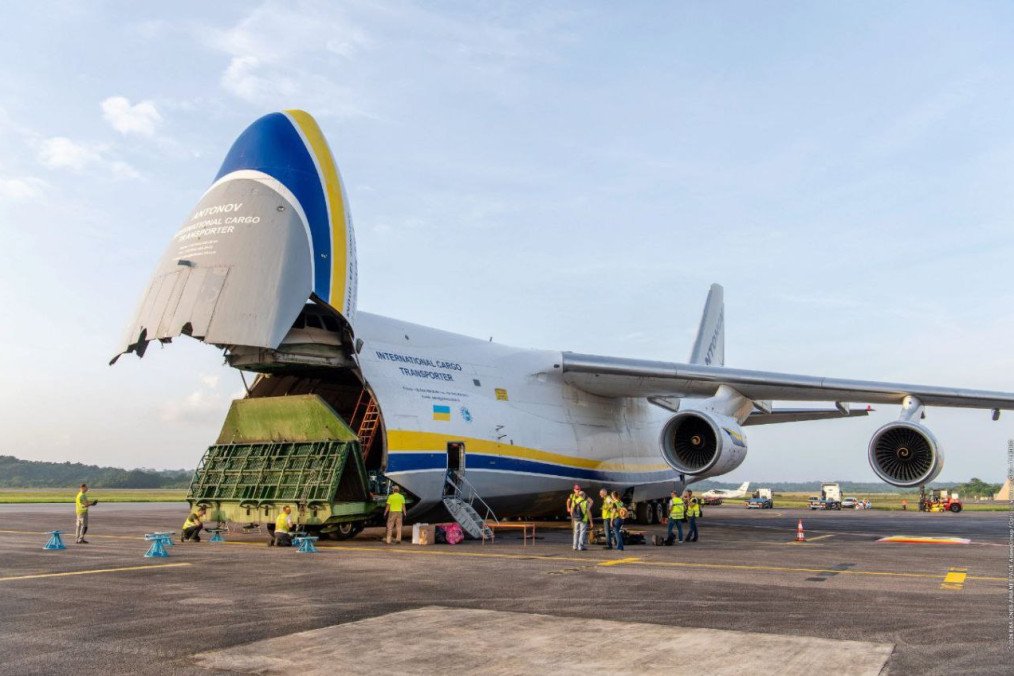- Category
- Latest news
Ukrainian An-124 Transports French Military Satellite CSO-3 for Launch

The Ukrainian An-124 cargo aircraft played a key role in delivering the French military reconnaissance satellite CSO-3 to its launch site in French Guiana. The satellite was successfully launched into orbit on March 6, 2025, aboard an Ariane 6 rocket from the Guiana Space Centre.
CSO-3 is the third and final satellite in the CSO (Composante Spatiale Optique) series, developed under France’s MUSIS (Multinational Space-based Imaging System) program for defense and intelligence purposes.
According to Defense Express, the system is designed to enhance reconnaissance capabilities, with the new satellite enabling more frequent observations of the same area, increasing coverage from once to twice per day.
France has invested over €900 million in the CSO program, with financial contributions from Germany and Belgium. The high-resolution optical reconnaissance system is expected to provide critical intelligence data for French defense forces, as well as the armed forces of its European partners.
The Ukrainian Antonov An-124 was selected for the transportation of the CSO-3 satellite due to its capacity to handle oversized cargo. The aircraft transported the satellite from Europe to French Guiana, a crucial step in ensuring the timely and secure launch of the system.
The An-124 has previously been utilized for high-priority defense logistics, including the withdrawal of French military personnel from Chad. Its role in this mission underscores the aircraft’s strategic importance in international defense and aerospace operations.
Unlike its predecessors, CSO-1 and CSO-2, which were launched using Russian Soyuz rockets, CSO-3 was deployed aboard an Ariane 6 launcher. France discontinued the use of Russian launch services following the full-scale invasion of Ukraine in 2022, reinforcing Europe’s commitment to independent space access.
The launch of CSO-3 represents a significant step for European space autonomy, particularly amid shifting geopolitical relations and evolving defense strategies. The Guiana Space Centre remains a critical hub for European satellite launches, with Ariane 6 positioned as a key alternative to previously utilized systems.
France has previously provided reconnaissance data to Ukraine, and there is potential for CSO-3’s intelligence capabilities to support Ukraine’s defense operations. With the temporary suspension of certain intelligence-sharing agreements by the United States, European allies, including France, continue to explore avenues for military and strategic cooperation.
CSO-3’s advanced imaging technology offers high-resolution optical and infrared reconnaissance, capable of capturing 3D images with a resolution of approximately 35 cm. Positioned at an altitude of 800 km, the satellite enhances France’s ability to conduct detailed surveillance and intelligence gathering, potentially benefiting partner nations engaged in defense operations.
The CSO program, initiated in 2010, is managed by the French space agency CNES on behalf of the Directorate General of Armaments (DGA). Airbus was contracted for the development of the satellite system, with Thales Alenia Space contributing to key optical components.
Originally planned as a two-satellite system, the program was expanded to three satellites following Germany’s participation in 2015. The initiative aims to replace the aging Helios 2 reconnaissance satellites, providing enhanced capabilities for European defense and intelligence missions.
Following multiple delays due to technical adjustments, CSO-3 was successfully launched on March 6, 2025, at 17:24 local time. The satellite is expected to operate in orbit for at least a decade, reinforcing Europe’s strategic space capabilities and supporting allied defense operations.


-72b63a4e0c8c475ad81fe3eed3f63729.jpeg)


